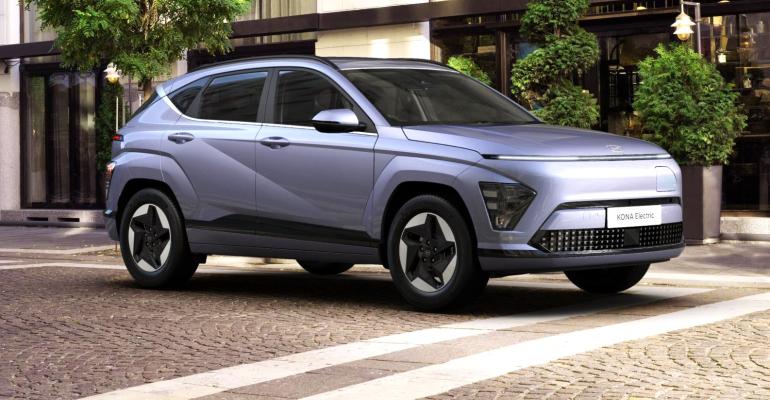As electric vehicles become more prevalent consumer options, regulators are ramping up efforts to adapt requirements originally intended for internal-combustion-engine vehicles. The latest major rulemakings from both the EPA and California Air Resources Board include first-of-a-kind battery-related requirements for electric vehicles that go beyond incentivizing manufacturers to produce EVs to ensuring that customers will be confident in the performance of those EVs. However, given the inherent differences between EVs and ICE vehicles, EPA and CARB are continually refining these requirements by issuing informative guidance documents and soliciting industry feedback.
Recent EPA and CARB Rulemakings Advance EV Requirements
On Aug. 25, 2022, CARB proposed its Advanced Clean Cars II regulations (ACC II) and associated zero emission vehicle (ZEV) mandates requiring 35% of new passenger cars, trucks and SUVs sold in California to be “zero emission” by 2026 and 100% by 2035. Beyond building on the ZEV mandates passed through the first set of ACC regulations passed in 2012, ACC II imposes additional ZEV requirements for battery durability, warranties and data standardization.
Notably, manufacturers must phase in the standardized on-board diagnostic system (OBD II) currently required for conventional ICE vehicles, which requires standard connections for third parties to diagnose the ZEVs. Manufacturers must also provide a “customer readable state of health metric,” displaying deterioration in the battery relative to when it was new. ACC II also introduces warranty requirements; by MY 2030, vehicles must maintain at least 80% of electric range for 10 years or 150,000 miles (241,500 km), phased in from 70% for MY 2026 through 2029 vehicles. By MY 2031, battery packs must be warranted to maintain 75% of their energy for eight years or 100,000 miles (161,000 km), phased in from 70% for MY 2026 through 2030.
ZEV powertrain components must also be warranted for at least three years or 50,000 miles (80,500 km).
Following ACC II, on May 5, 2023, EPA proposed its Multi-Pollutant Emissions Standards for MY 2027 and Later Light-Duty and Medium-Duty Vehicles. EPA’s proposed rule does not have an explicit ZEV sales mandate; however, EPA projects that manufacturers may develop a vehicle fleet with nearly 70% BEVs by MY 2023 to comply with CO2 emission standards.
EPA also added its own battery durability and warranty requirements beginning with MY 2027. Under the proposed rule, all BEVs and PHEVs would be required to have battery state of health monitors and light-duty BEVs and PHEVs would be required to retain 80% of usable battery energy up to five years or 62,000 miles (99,820 km), and 70% at eight years or 100,000 miles. High-voltage battery and associated electric powertrain components of light-duty BEVs and PHEVs would be subject to an eight-year, 80,000-mile (128,800-km) warranty. EPA has not yet finalized this rule, so whether these requirements are adopted remains to be seen.
New Requirements and Guidance on the Horizon
On Nov. 15, 2023, CARB launched a workshop to consider amendments to ACC II, in part to harmonize with EPA’s proposed rule. CARB is also considering updates to further improve on the standardization of ZEV requirements and increase consumer-facing information. CARB is considering which existing industry standards to adopt in an effort to update ZEV charging infrastructure interoperability standards. CARB may also expand conformance testing requirements to vehicle-side charging data. Finally, CARB is considering updating BEV labels to include improved electric driving range information, improved charge time information and efficiency metrics more relatable to consumers (miles/kWh instead of kWh/100 miles).
In addition to new regulations, agencies continue to issue guidance to explain how existing ICE requirements can be applied to EVs. For example, most recently, on Jan. 29, 2024, EPA published a letter interpreting the phrase “electrical charging system” as it applies to the designation of EV subconfigurations for fuel economy labeling, Corporate Average Fuel Economy reporting, and greenhouse gas testing and reporting per 40 C.F.R. Part 600. Notably, EPA has clarified that EVs must have the same onboard electrical charger capacity level in order to have the same “basic engine” for purposes of designating vehicle subconfigurations given how onboard charger design impacts charging time and vehicle weight which, in turn, affects equivalent fuel economy performance.
 Moving Forward: Potential Impacts of Regulatory Efforts
Moving Forward: Potential Impacts of Regulatory Efforts
How consumers and manufacturers receive these new requirements remains to be seen. On the one hand, EV consumers will receive more information about their purchase and standardized equipment and diagnostic information available may improve access to charging infrastructure and third-party repair and upgrade service providers. This may increase consumer confidence in the capability of new EVs and viability of a future used-EV market, mitigating some of the friction to making the switch to EVs today.

On the other hand, more requirements for manufacturers may increase costs passed on to consumers along with a heightened enforcement risk as CARB ramps up its efforts to not only specify the data manufacturers must share with consumers but also confirm such data is accurately provided when the vehicle is on the road.
Regardless, interested parties from all parts of the EV industry will be paying close attention to these forthcoming changes and provide their views to EPA and CARB as rulemakings progress.

Justin A. Savage (pictured, top left) is Global Co-Leader of law firm Sidley’s Environmental practice and Leader of the firm's Automotive and Mobility team.
Aaron Flyer (pictured, center left) is a Senior Managing Associate in law firm Sidley's Environmental practice group.
Rob Abrams (pictured, lower left) is a Managing Associate in law firm Sidley's Environmental practice group, where he counsels clients on environmental regulatory compliance.





